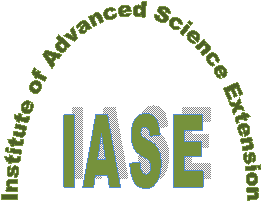International
ADVANCED AND APPLIED SCIENCES
EISSN: 2313-3724, Print ISSN:2313-626X
Frequency: 12
![]()
Volume 6, Issue 2 (February 2019), Pages: 94-101
----------------------------------------------
Original Research Paper
Title: The teaching of Thirukkural based on HOTS among the students of Tamil primary schools in the state of Perak
Author(s): Kartheges Ponniah *, Muniisvaran Kumar, Sasigaran Moneyam, Ilangkumaran Sivanadhan
Affiliation(s):
Faculty of Languages and Communication, Sultan Idris Education University, Perak, Malaysia
* Corresponding Author.
 Corresponding author's ORCID profile: https://orcid.org/0000-0003-2955-0607
Corresponding author's ORCID profile: https://orcid.org/0000-0003-2955-0607
Digital Object Identifier:
https://doi.org/10.21833/ijaas.2019.02.014
Abstract:
This research is a study which is conducted under the Sultan Idris Education University’s University Research Grant. The purpose of this study is to measure the mastery of Higher Order Thinking Skills (HOTS) among the teacher of Tamil Primary Schools in the state of Perak and the mastery of questioning technique based on Bloom’s Taxonomy using HOTS in the teaching of Thirukkural. The approach of quantitative was employed to obtain the data of the research. 80 teachers were chosen as samples from four different schools in Perak to elicit information pertaining to the mastery of HOTS among educators. Through the grading which was conducted by referring to SPSS, the results of the research revealed that the mastery of HOTS among teachers in this category is average and weak from the eight criteria which were studied. This show the efforts that are taken by the Malaysian Ministry of Education provide less impact on the teachers in understanding and mastering HOTS. Meanwhile, a quantitative method was used to understand the mastery questioning techniques of teachers for the HOTS questions. The teaching and learning method of Thirukkural for Year 5 was observed in two schools to elicit data for the mentioned purpose. Interviews were also conducted with two Year 5 Tamil teachers who were observed. The overall findings reveal that 51.3% are able to list out HOTS questions. This is a good scenario in integrating HOTS in students. In conclusion, through this research, it can be said that the teaching and learning of Thirukkural in the classroom can foster the higher order thinking among the students of Tamil Primary Schools excellently. However, it is very much dependant on the questioning techniques of teachers which encourage them towards it. The research findings will benefit educators and agencies involved in implementing the teaching and learning of Thirukkural effectively in fostering HOTS among students.
© 2019 The Authors. Published by IASE.
This is an
Keywords: Higher order thinking skills (HOTS), Tamil primary schools, Questioning technique, Thirukkural, Critical and creative thinking
Article History: Received 2 October 2018,Received in revised form 1 January 2019, Accepted 3 January 2019
Acknowledgement:
No Acknowledgment
Compliance with ethical standards
Conflict of interest: The authors declare that they have no conflict of interest.
Citation:
Ponniah K, Kumar M, and Moneyam S et al. (2019). The teaching of Thirukkural based on HOTS among the students of Tamil primary schools in the state of Perak. International Journal of Advanced and Applied Sciences, 6(2): 94-101
Figures
No Fig.
Tables
Table 1 Table 2 Table 3 Table 4 Table 5 Table 6 Table 7 Table 8 Table 9 Table 10 Table 11
----------------------------------------------
References (11)
- Abu R, Tarmizi RA, and Mustapha G (2002). Kemahiran berfikir. Institut Pendidikan Jarak Jauh, Universiti Putra Malaysia, Serdang, Malaysia. [Google Scholar]
- Ball AL and Garton BL (2005). Modeling higher order thinking: The alignment between objectives, classroom discourse, and assessments. Journal of Agricultural Education, 46(2): 58-69. https://doi.org/10.5032/jae.2005.02058 [Google Scholar]
- Gurusamy V and Thambu N (2018). Development of moral motivation through acting activities in teaching and learning of moral education in secondary schools. Muallim Journal of Social Sciences and Humanities, 2(4): 234-250. [Google Scholar]
- KPM (2014). Elemen KBAT dalam kurikulum. Kementerian Pendidikan Malaysia [Ministry of Education Malaysia], Bahagian Pembangunan Kurikulum, Kuala Lumpur, Malaysia. [Google Scholar]
- Othman MS and Kassim AY (2017). Isu dan permasalahan (pdp) pelaksanaan kemahiran berfikir aras tinggi (kbat) dalam amalan pengajaran guru menurut pandangan ibn khaldun (issues and problems (iap) in implementation of higher order thinking skills (hots) in teaching practice from ibn khald. Journal of Human Capital Development (JHCD), 10(1): 1-18. [Google Scholar]
- Puteh SN, Ghazali NA, Tamyis MM, and Ali A (2016). Keprihatinan guru bahasa melayu dalam melaksanakan kemahiran secraa kritis dan kreatif. Jurnal Pendidikan Bahasa Melayu, 2(2): 19-31. [Google Scholar]
- Robert CB and Sari B (2003). Qualitative research for education-An introduction to theories and methods. Pearson Eductin Inc., London, UK. [Google Scholar]
- Rosnani H and Suhailah H (2003). The teaching of thinking in Malaysia. International Islamic University Malaysia, Kuala Lumpur, Malaysia. [Google Scholar]
- Salleh S (2005). Interaksi lisan dalam pengajaran dan pembelajaran komponen Kesusasteraan Melayu (Komsas) dalam mata pelajaran Bahasa Melayu. Ph.D. Dissertation, Universiti Kebangsaan Malaysia, Bangi, Malaysia. [Google Scholar]
- Sanford SB (1998). The dravidian languages. Routledge, London, UK. [Google Scholar]
- Sharamini S (2018). Thinking skills in tamil language form 3 textbook and their implementation in secondary schools. Muallim Journal of Social Sciences and Humanities, 2(4): 315-326. [Google Scholar]

